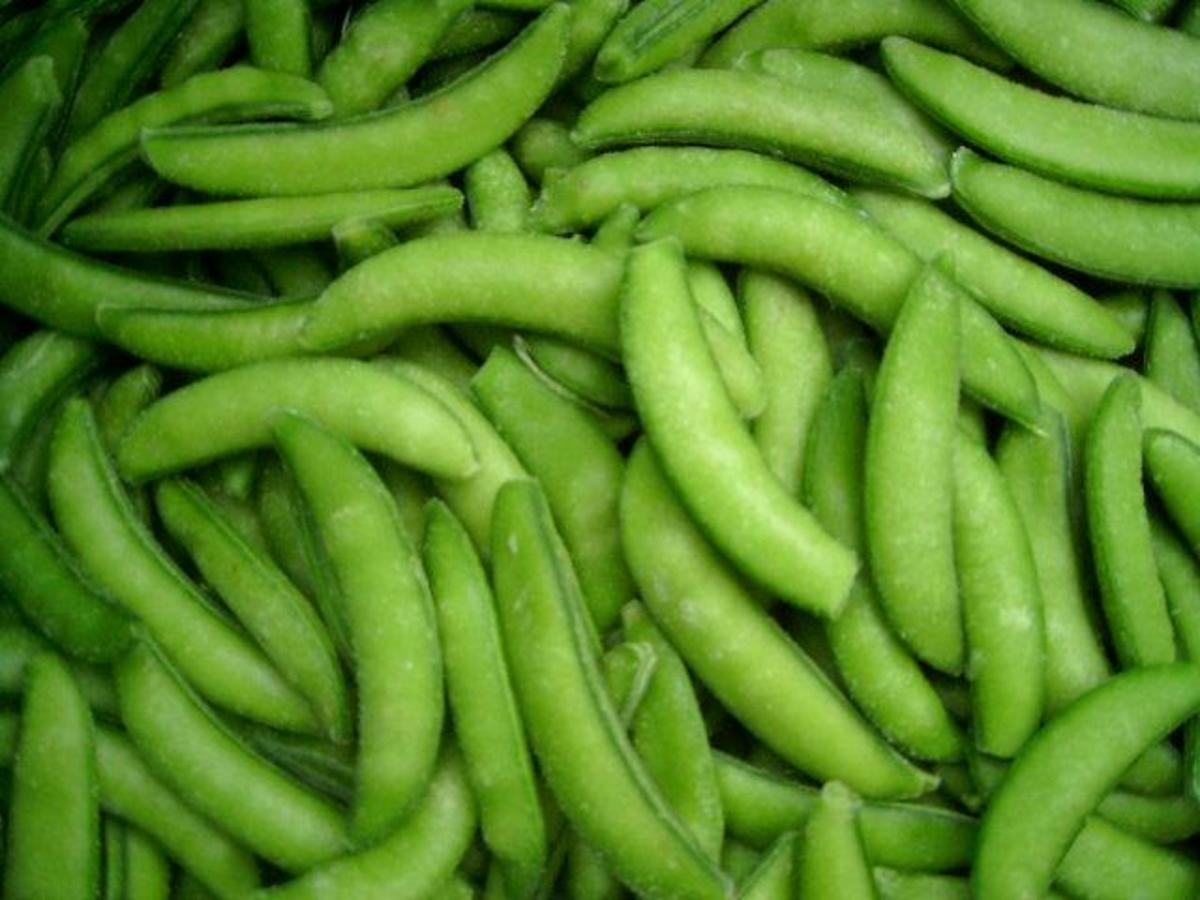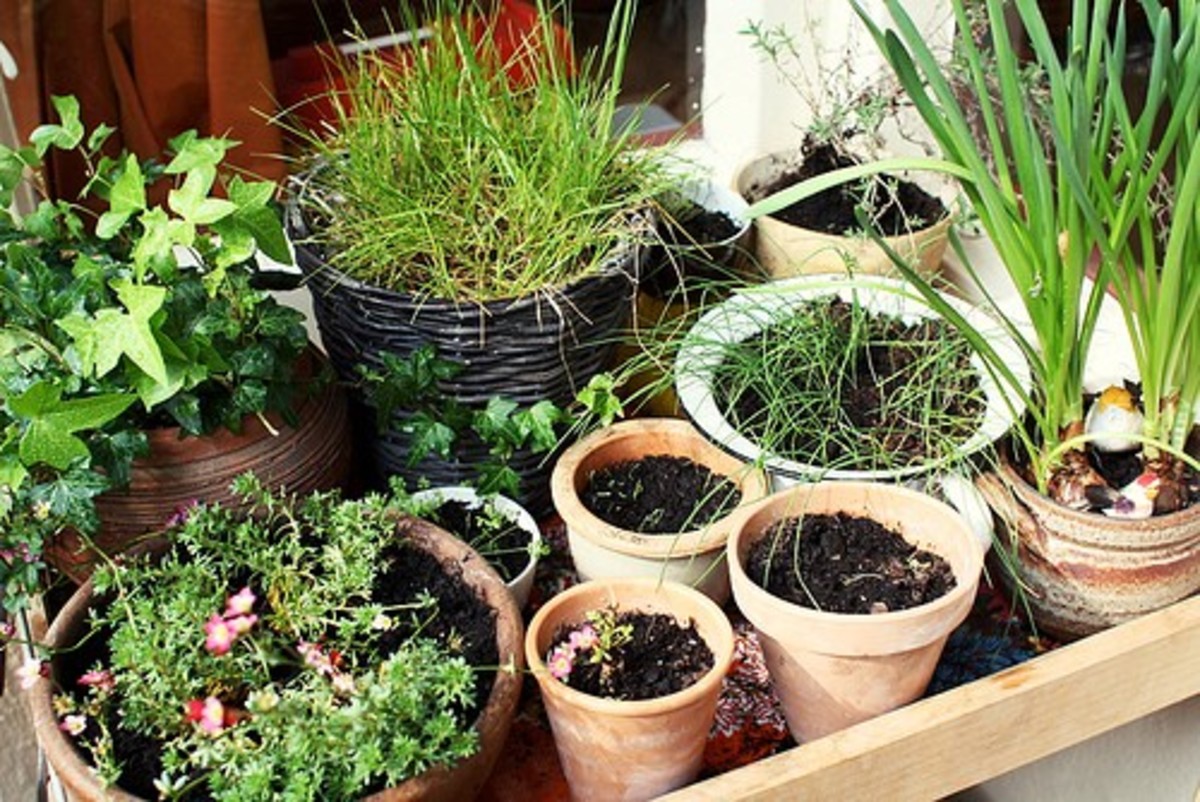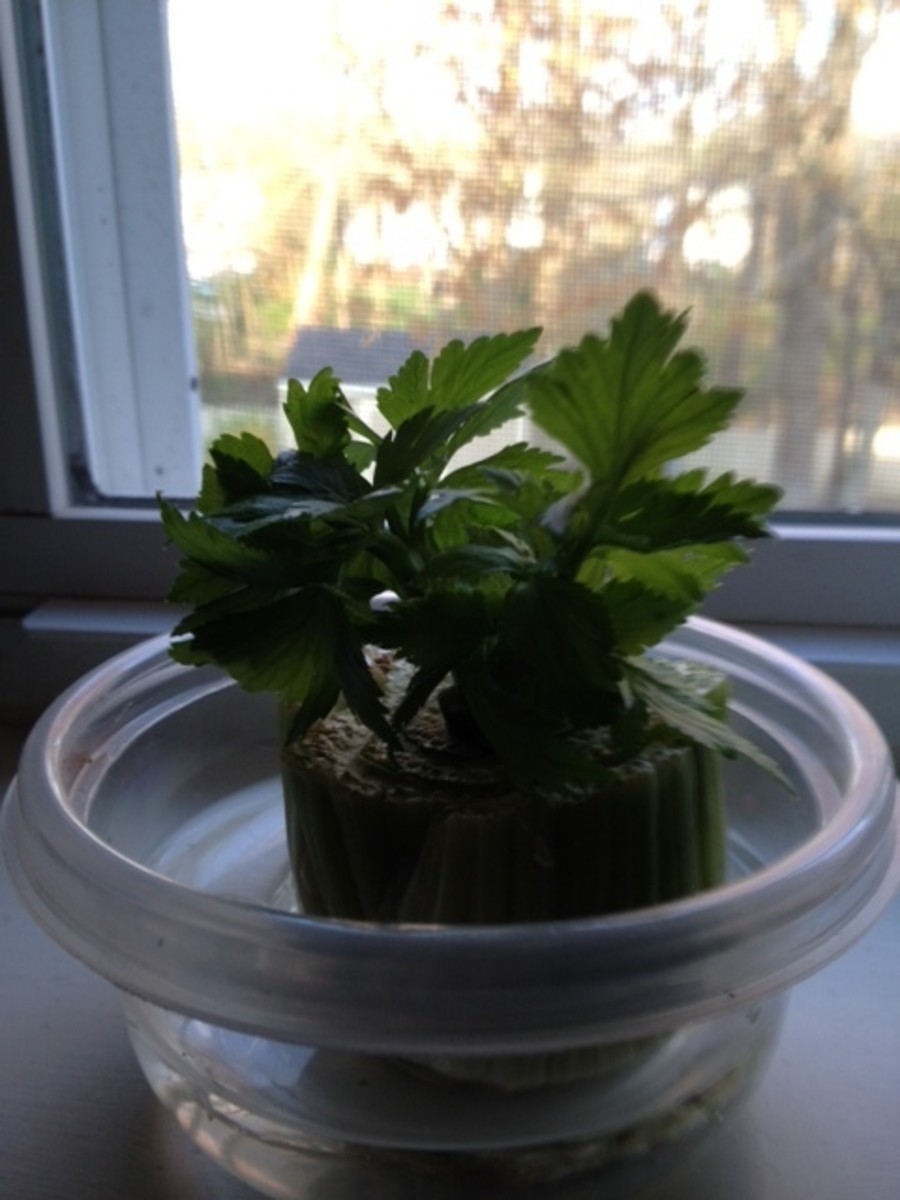How to Grow an Indoor Vegetable Garden
About Growing Your Own Food
The joy of growing your own vegetables is so appealing that, even if you don’t have outside space for planting and gardening, with some dedication you can still enjoy homegrown food by gardening indoor. If I was a tomato plant, I’d rather grow outside, but if that is not an option indoor can work too.
Gardening indoors can be a little challenging, because most fruits and veggies are supposed to grow under the warm light of the sun, with the sunlight ample spectrum of light.
However, there are many ways you can approach indoor gardening and be successful.

Why Indoor Gardening?
Gardening indoor is a wonderful option when you don’t have the option of a suitable outdoor space or when you want to grow your own veggies off-season. Many people living in the city, with no yard available, give up on the ides of gardening; others get very creative on the outdoor space they have available and take advantage of balconies, rooftops, fire escape railing, and more.
Good Reasons to Start Gardening Indoor
There are many reasons why indoor gardening is a great choice:
- Lack of outdoor space – the number one reason for doing indoor gardening is the fact that no adequate space is available outdoor to start a garden, even a container garden.
- Cost – How convenient is it to snip your salad leaves from a readily available pot and pick your eggplants fresh, at no cost? Prices at the markets can be crazy high, especially when offseason, or after bad storms that ruined crops. If you compare growing your own with organic produce, which is probably what you are growing anyway, you’ll see the monetary convenience of having your own garden.
- Quality and taste – The taste of a tomato just picked from the vine is amazing compared to the odorless and almost tasteless ones you find in the supermarkets. Usually, produce is picked before ripening and gets stored and refrigerated for a long time, and shipped all around the globe to reach the selling market. This process not only affects the taste of food but also diminishes the nutritional factors in veggies and fruits, especially vitamins.
- Health and safety - when you grow your own food, you know exactly what went into it as far as pesticides, fertilizer, etc. You eat healthier veggies, because you are in control of the chemicals applied, and they ripe on the plant and have higher nutritional value.
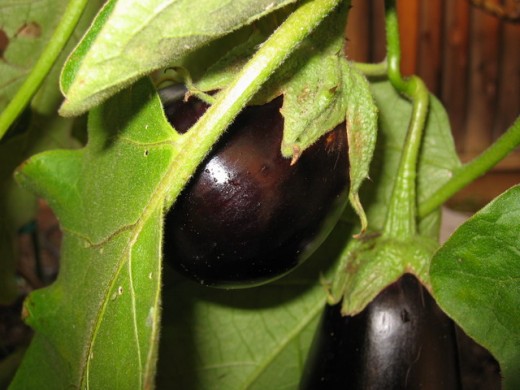
- Satisfaction and relaxation – Growing something yourself can be very rewarding. The daily care you put into your plants pays back in so many ways. Gardening can be very relaxing and gratifying and can serve as stress reduction therapy.
- Bringing the outside in – Vegetable plants kept indoor, with the correct amount of light and nutrients are a healthy and colorful addition to any living space. If you use colorful or decorative containers they can serve as home décor. Like all plants, they also clean your air from Co2 releasing oxygen.
- Conversation starters – if you like to entertain, you’d see how many people are interested and curious about your green thumb and your beautiful crop, making them wonderful conversation starters.
Have Realistic Expectations
Getting started, you need to evaluate your space and set realistic expectations. How big is your home? Do you have good sunlight that you can use? Would you have to use grow lights? How much of your living space are you comfortable giving up to containers and tools?
All these aspects should be taken into consideration and carefully evaluated before you step into indoor gardening. You don’t want to risk getting overwhelmed with a sense of invasion from your green friends, or clutter. Plan the quantity and quality of your plants carefully, and you’ll be a happier gardener.
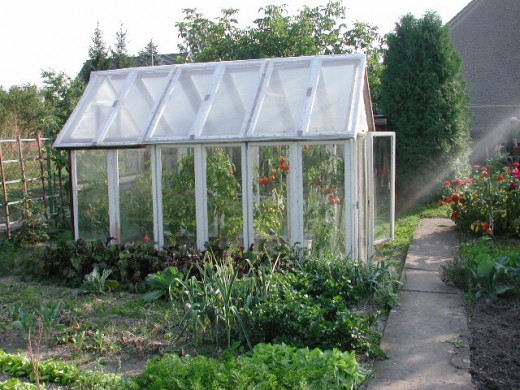
Types of Indoor Gardening
The main types of approach to indoor gardening are:
- Windowsill. This is the most classic and straight-forward way to grow veggies indoors. Placing the pots next to a sunny window and providing enough water is the simplest way to grow a garden inside your home.
- Greenhouse. Greenhouses are enclosed spaces usually made of glass or other transparent material. The light comes through in abundance, and the plants are protected from most elements. The temperature may need to be controlled, depending on the season. If you have a greenhouse you are a step ahead in starting your veggie garden.
- Indoor greenhouse tent. If you have enough space, you can grow plants in an indoor greenhouse tent with reflective inside. The tent zips up and keeps the light directed on the plants, prevents light leakage and help maintain humidity and temperature levels.
- Vertical Planter. A vertical garden beside providing readily available supplies of vegetables, it can sure be a conversation piece in any home, with the added health factor that it adds oxygen to the air of your living space.
You can grow vertically on the wall or in tower planters, both kinds of planters are available on the market, or you can build your own. For wall planters, make sure the wall is strong enough to support the weight. - Grow lights. If your source of natural light is not adequate, you can use grow lights to provide the energy the plant needs to grow. There are different kinds of lights, but the most energy efficient are the modern LED lights. They are quite expensive if compared to fluorescent lighting, but they last longer and pay off in terms of energy consumption.
- Soil vs. Hydroponic. Crops can be grown planted in soil, or with a hydroponic system. In the Hydroponic method the roots are immersed in a growing medium that provides some support for the roots, and the plant food instead of coming from chemicals in the soil, are provided by liquid fertilizer.
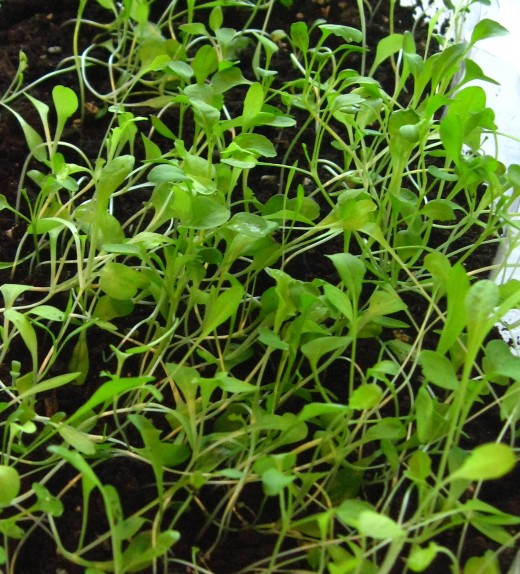
Salad Leaves and Herbs that Can Grow Indoor
Basil – This wonderful herb smells good and tastes better. Basil comes in green varieties, with different size leaves, and some purple varieties. It makes a great addition in tomato salads, sauces, and many Mediterranean dishes.
Chives – These thin and hollow blades of grass are a tiny relative of onions. They are good snipped and sprinkled on food.
Coriander (cilantro) – fresh coriander leaves are better known as cilantro, a base ingredient for salsa, guacamole, and other tasteful recipes.
Marjoram – a perennial herb of the mint family, marjoram grows wild in the Mediterranean region. It’s used in different kinds of foods, especially in roasts and meat dishes.
Mint – Mint likes full sun and lots of water. The leaves can be used in the kitchen in many recipes, from meat to salads, from sherbets to hot teas.
Oregano – Oregano is a signature flavor in many Italian, Spanish, and Mexican dishes. Like many herbs, it tastes better if picked before it flowers, and added to the hot dishes toward the end of the cooking time.
Parsley – available in two varieties, the curly leaf and the more flavorful Italian flat leaf, parsley can be added as a garnish or as an ingredient to all kinds of dishes.
Rosemary – In the kitchen rosemary gives a nice hearty flavor to many dishes, meat, fish, potatoes, etc. The leaves smell great and just brushing the plant can perfume the whole room.
Rhubarb Chard (beta vulgaris) – with the striking red stem against the green leaves, the rhubarb chard is a delight to look at and a tasty and colorful addition to salads.
Be Aware of Their Properties
Many Herbs have great medicinal properties and can be very useful both in the kitchen and to cure some health problems.
Be very careful before you use herbs as medicines. Always ask your doctor before about any contraindications or side effects specific to your conditions.
Fruits that Can Grow Indoor
Technically fruits, tomatoes, eggplants, and sweet peppers need lots of light, to be watered often, and a warm temperature. Some staking is necessary when the plants grow and start bearing fruits.
Hot chili peppers are highly decorative and can be kept inside with warm temperature and bright light. Water is quite important, water little and often. The dryer you keep your hot pepper plant, the spicier the taste of peppers.
Strawberries need plenty of bright light. The flowers are pretty and the red fruits are succulent and delicious.
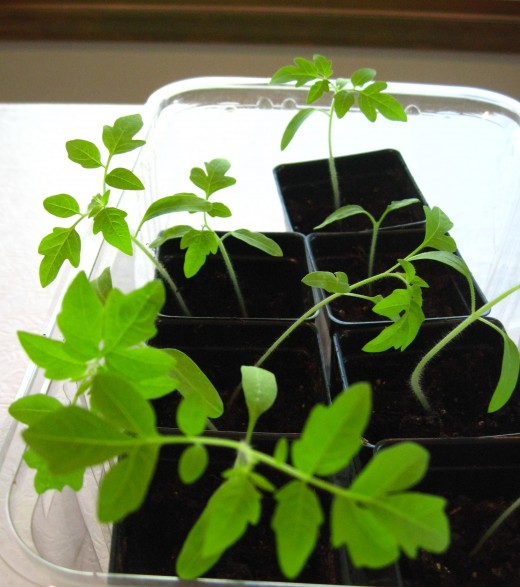
Edible Flowers
Plants
| Characteristics
| Culinary Uses
|
|---|---|---|
Borage
| Edible borage has a pretty blue flower and a cucumber flavor.
| Add flowers to salads and dishes. You can also freeze the flowers in ice cubes to add some flavor and decorate drinks.
|
Lemon Verbena
| A very ornamental plant, with a distict lemon flavor. It does well in containers with light damp soil.
| Lemon verbena can be cooked like spinach, added to veggie or fruit salad, or rubbed on meat.
|
Marigold
| The petals of all marigolds are eatable.
| They have a citrusy flavor, so they provide a colorful and fun addition to all dishes that would do good adding lemon.
|
Nasturtium
| The flowers and leaves of Nasturtium have a spicy flavor. Pick them young to have a milder taste
| Add flowers and leaves to salads or other dishes. They do better when paired with sweeter veggies.
|
Wild Bergamot (monarda)
| A plant from the mint family, wild bergamot is an edible and medicinal plant.
| Bergamot can be eaten bot raw or cooked; from its leaves you can get a tasty and healthy hot tea, and you can use both leaves or flowers to garnish a salad.
|
Growing Edible Fruits and Sprouts
Growing edible fruits indoor provides the multiple benefits of adding color and beauty to your home, and keeping a handy source of naturally fun additions to salads, meals, and drinks.
© 2012 Robie Benve

